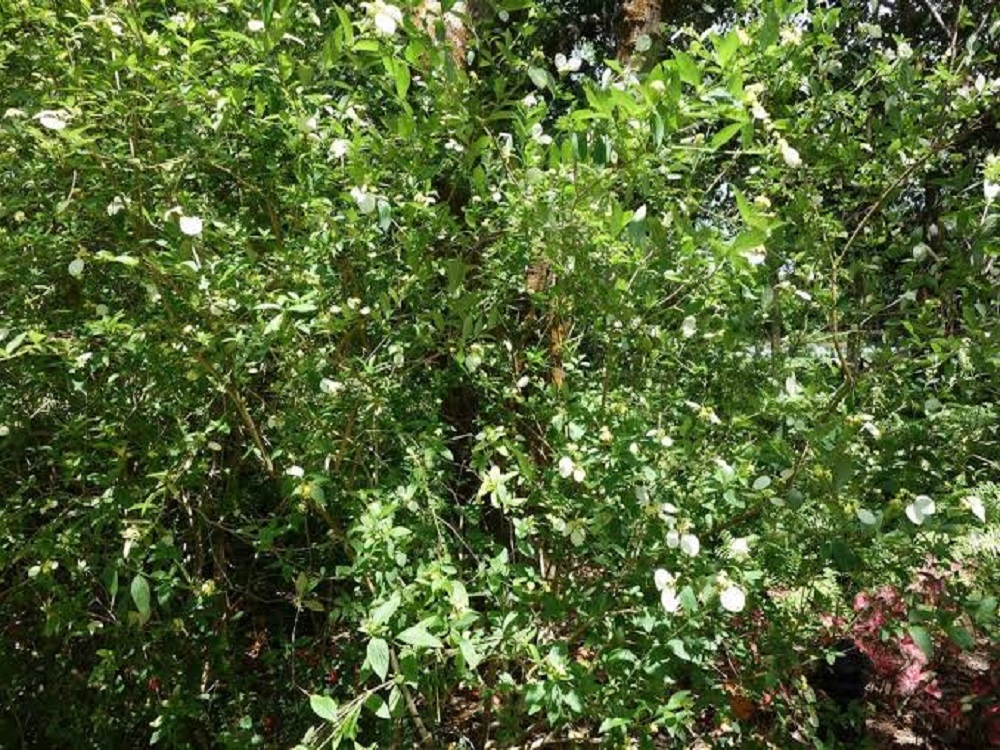Bedina - Dhobi Tree

Mussaenda glabra
Summary
Scientific Classification
Kingdom: Plantae
Division: Angiospermae
Class: Dicotyledonae
Order: Malvales
Family: Rubiaceae
Genus: Mussaenda
Species: M.glabra
Scientific Name: Mussaenda glabra Vahl.
Common Names:
English: Dhobi Tree, Flag bush, White flag, White rag plant.
Hindi: Bedina.
Kannada: Bellotti.
Marathi: Bhutakesha.
Description:
- Habit and Habitat: Common along the edge of primary and secondary forests, open forests; 300-600 m. Terrestrial habitat.
- Distribution: Distributed all over the world India: Assam, Meghalaya; China, Indo-china, Malaysia.
- Morphology:
Leaf: Leaves simple, opposite decussate; stipules triangular, acuminate, 2-fid, rusty pubescent; petioles.
Inflorescence: Terminal cymes.
Flower: Flowers orange-yellow, across in terminal cymes; peduncles slender, pubescent; bracts subulate; pedicelate, pubescent; bracteoles linear-lanceolate; calyx-tube oblong; lobes linear-lanceolate; petaloid sepals elliptic or oblong, white; corolla-tube, pubescent, shining scaly hairs within; lobes orbicular; styles filiform.
Fruit: Berries 1.2 cm in diam., globose.
Seed: Tiny seeds. - Propagation: It can be propagated by seed and stem cutting.
- Importance:
Used as Fruit & Vegetable; also as Herb & Spice. Medicinal (Its leaves can be used to make tea which may be given for cough. The leaves are chewed with betel, consumed to treat bowel complaints, as a poultice for headache, or eaten in salad. A decoction of the roots is given after childbirth. The abundance of this flower throughout the year can be used for evaluating its medicinal value. It is used for its anti oxidant property. - Location: Botanical Garden.
 Trees of GSS Project supported by Makerspace Belgaum Website concept and designe by
Trees of GSS Project supported by Makerspace Belgaum Website concept and designe by